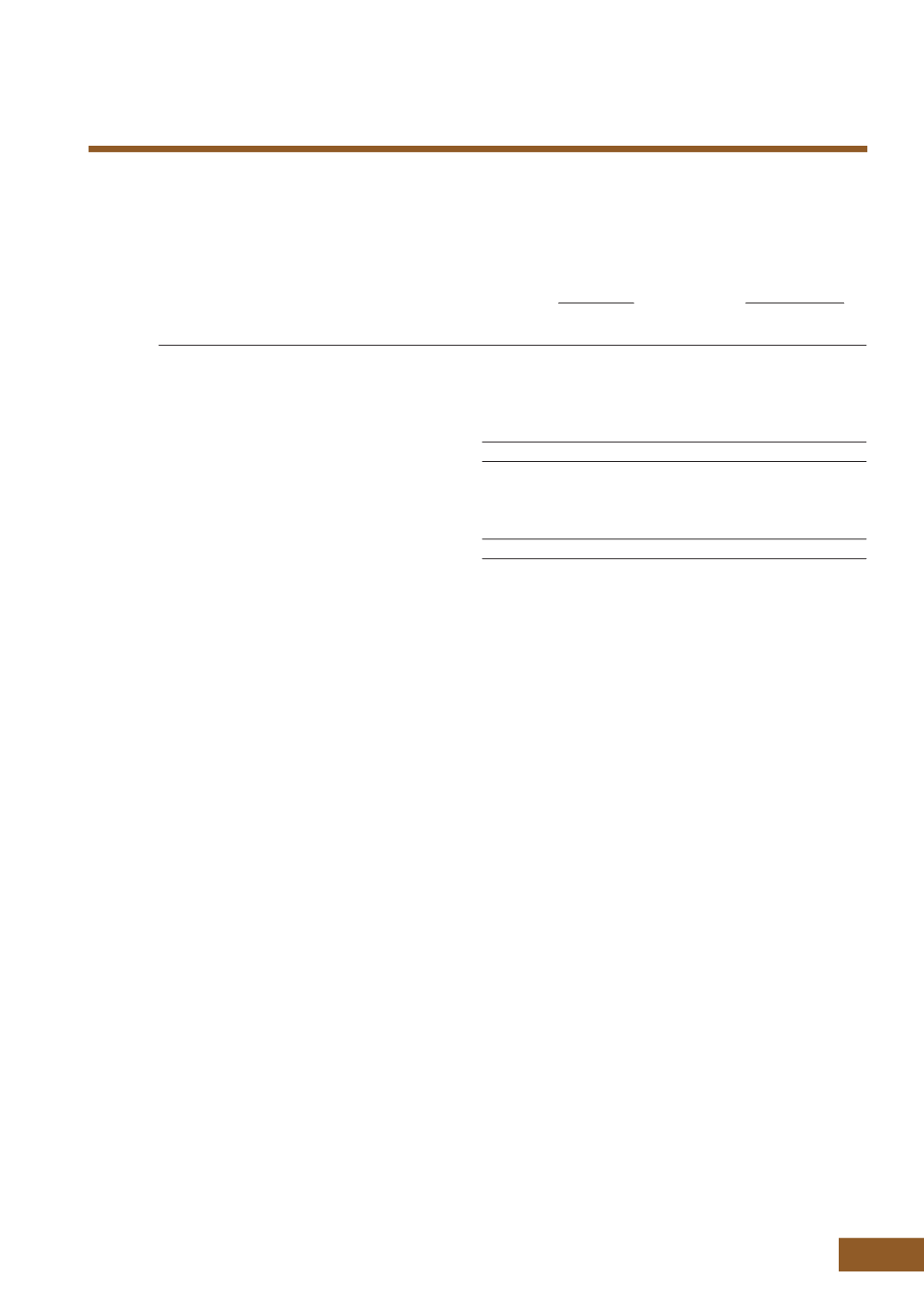
For the financial year ended 31 December 2015
103
ANNUAL REPORT 2015
27. FINANCIAL RISK MANAGEMENT
(CONTINUED)
(e) Financial instruments by category
The financial instruments of the Group and of the Company include the following:
The Group
The Company
Note
2015
2014
2015
2014
$’000
$’000
$’000
$’000
Financial Assets
Available-for-sale financial assets
14
2,080,555
2,311,492
281
330
Trade and other receivables
28,680
19,562
138,378
121,459
Cash and bank balances
18
315,731
224,666
287,257
194,270
2,424,966
2,555,720
425,916
316,059
Financial Liabilities
Trade and other payables
51,812
39,066
80,704
72,286
Borrowings
20
43,547
56,332
43,547
56,332
95,359
95,398
124,251
128,618
28. SEGMENTAL REPORTING
At 31 December 2015, the Group was organised into the following main business segments:
• Manufacturing, marketing and trading of healthcare products;
• Provision of leisure-related goods and services;
• Property rental; and
• Investments in securities.
Healthcare division principally manufactures and distributes topical analgesic products under the “Tiger Balm” and
“Kwan Loong” brand.
Leisure division provides family and tourist oriented leisure alternatives mainly in the form of oceanariums.
Property division owns and leases out several investment properties in the Asean region.
Investment division engages in investing activities, mainly in quoted and unquoted securities in the Asia region.
Inter-segment transactions are determined on an arm’s length basis. Unallocated costs represent corporate expenses.
Segment assets consist primarily of available-for-sale financial assets, investment properties, property, plant and
equipment, intangible assets, inventories, receivables, and cash and bank balances. Segment liabilities comprise
operating liabilities and exclude tax liabilities. Capital expenditure on non-current assets comprises additions to
investment properties, property, plant and equipment, intangible assets and investment in associated companies.
The Group evaluates performance on the basis of profit or loss from operations before tax expenses and management
fees charged internally and exclude non-recurring gains and losses.
The Group accounts for inter-segment sales and transfers as if the sales or transfers were to third parties, i.e. at current
market prices.
The Group’s reportable segments are strategic and distinct business units reporting to key group management. They are
managed separately because each business targets different customers and carry different business risk.
NOT E S TO T H E F I NAN C I A L S TAT EME N T S
(CONTINUED)


